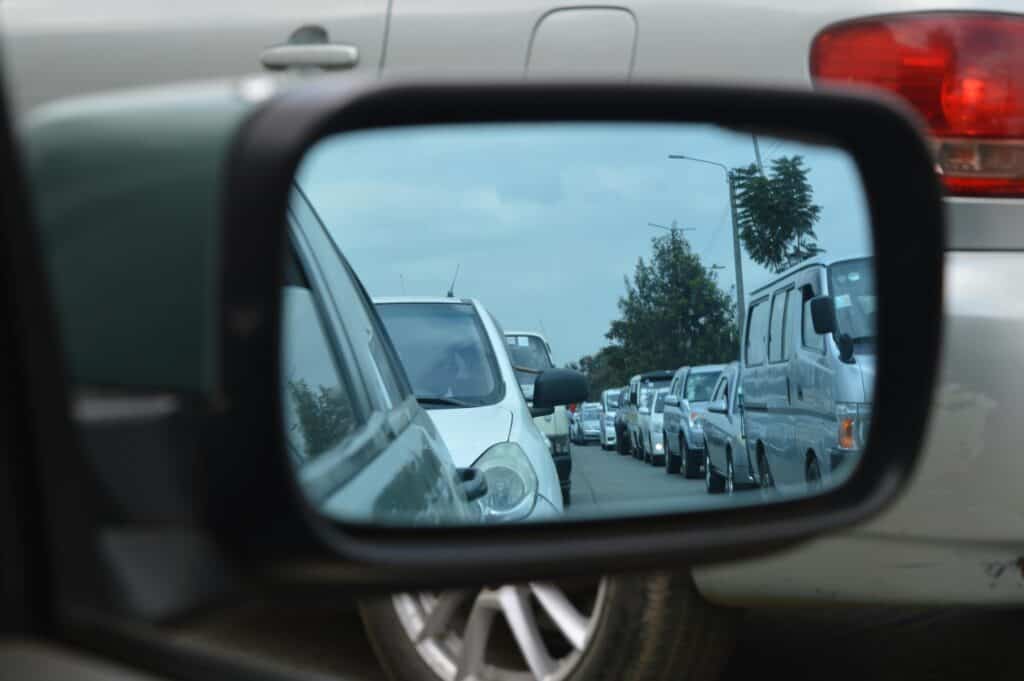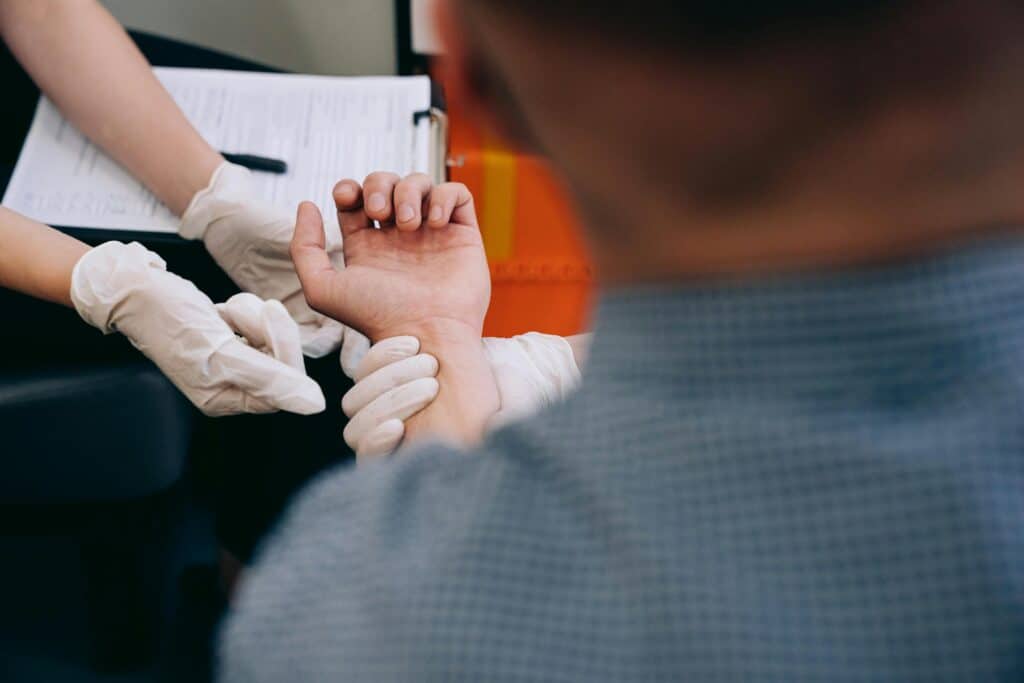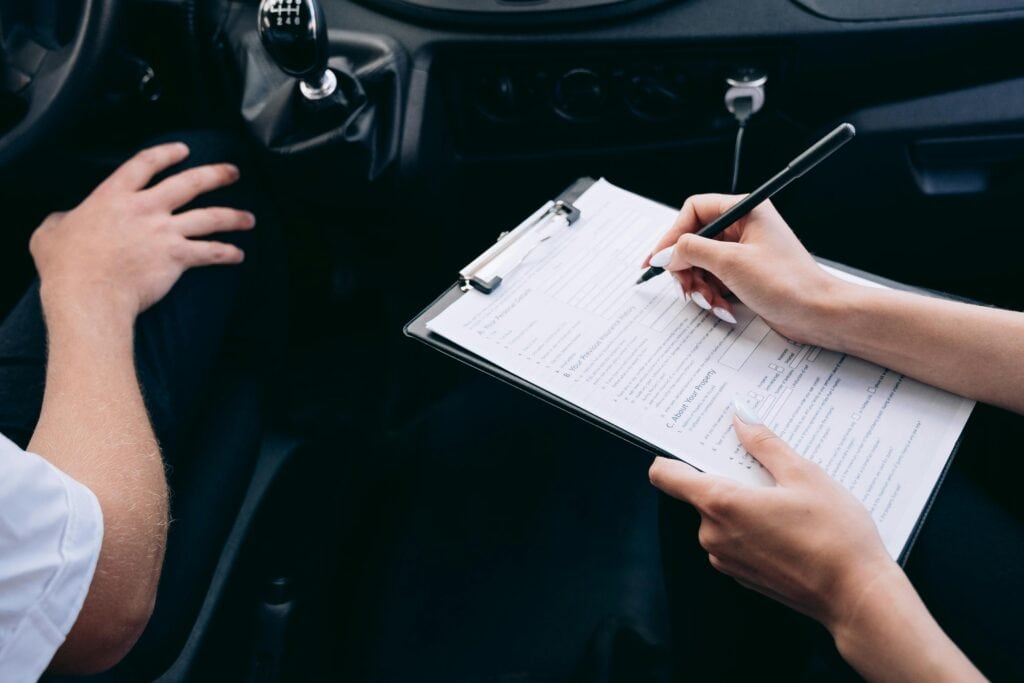Victims of California wildfires: We are here to help. Click here for assistance.
- Personal Injury
- Car Accidents
- Truck Accidents
- Uber/Lyft Accidents
- Motorcycle Accidents
- Pedestrian Accidents
- Bicycle Accidents
- Bus Accidents
- E-Scooter Accidents
- Traumatic Brain Injury (TBI)
- Los Angeles Wrongful Death Lawyer
- Catastrophic Injuries
- Slip And Fall
- Product Liability
- Dog Bite Injury Lawyer
- Sexual Abuse
- Nursing Home Abuse
- Wildfire Accidents
- View All Practice Areas
- Wildfire
- Attorneys
- Case Results
- Resources
- Service Areas
- About Us
- Podcast
Who’s at Fault in a Rear-End Collision? Fault, Injuries, and Next Steps

Rear-end collisions are a common type of car accident that can result in serious injuries and property damage. But who is at fault when one car crashes into another from behind? In many cases, the driver of the rear vehicle is held liable, but there are exceptions.
This guide will explore the factors contributing to rear-end collisions, the legal principles determining fault, and the steps you should take after an accident to protect your rights and seek compensation for your losses.
What is a Rear-End Car Collision?
A rear-end collision occurs when one vehicle crashes into the vehicle in front for various reasons, such as distracted driving, failing to stop in time, or poor road conditions.
Rear-end collisions are so frequent because of various factors. In most cases, the rear driver is often presumed to be at fault since they’re expected to maintain a safe distance. However, sudden stops or malfunctions like faulty brake lights can also impact fault.
Common Causes of Rear-End Collisions
Rear-end accidents typically result from:
- Distracted driving: Taking eyes off the road, even briefly, can lead to a rear-end collision.
- Following too closely: Tailgating or not maintaining a safe following distance makes it difficult for the rear driver to stop in time.
- Speeding or sudden braking: Excessive speed can limit reaction time, leading to accidents.
- Weather conditions: Rain, fog, and icy roads reduce traction and increase stopping distance, heightening accident risks.
Each cause plays a critical role in fault determination and impacts the outcome of insurance claims. Establishing cause can also aid in identifying whether compensation is due, especially if severe injuries occur.
Determining Fault in a Rear-End Collision
In a rear-end collision, the rear driver is typically held accountable. This is based on the idea that drivers should allow enough space to respond to sudden movements, slow down, or stop.
Exceptions and Comparative Fault
There are exceptions where the driver stopping or the vehicle in front may share or assume fault. For example:
- Sudden stops: If a car slows down or stops suddenly without warning, the rear driver may not have sufficient time to respond.
- Faulty brake lights: If the brake lights fail, it may be difficult for the rear driver to anticipate a stop.
- Comparative fault: In some states, shared fault may be determined, affecting each driver’s liability based on their actions.
Establishing fault often requires evidence, such as dashcam footage, road conditions at the time of the incident, and witness statements. Evidence can strengthen your position when dealing with the insurance company or pursuing compensation.
While the rear driver is typically presumed at fault, exceptions are based on unique circumstances, such as sudden stops or malfunctioning brake lights. These nuances also apply to other types of accidents. Learn about Who Is at Fault in a Parking Lot Accident to understand how fault is determined in different scenarios.
What to Do After a Rear-End Collision
If you’re involved in a rear-end accident, taking the right steps can significantly impact the outcome of your insurance claim and any potential legal proceedings:
- Check for injuries: Ensure everyone is safe and seek immediate medical assistance.
- Move to a safe location: If the accident happened in a busy or dangerous spot, move your vehicle to a safe area.
- Gather evidence: Take photos of the accident, vehicle damage, and road conditions. Collect statements from witnesses and exchange information with other drivers.
- File a police report: Reporting the incident creates official documentation, which insurance companies often require when filing a claim for a rear-end collision.
Following these steps can be critical in handling claims and legal actions that may arise post-accident.

Common Injuries in Rear-End Accidents
Rear-end crashes often lead to specific types of injuries, even in low-speed impacts. Here’s a brief overview of the most common:
- Whiplash and Neck Injuries
Rapid back-and-forth motion strains the neck, causing pain, stiffness, and sometimes long-term discomfort. Prompt care can help prevent chronic issues. - Back Injuries
The impact often leads to strains or herniated discs, especially in the lower back, which may cause pain, tingling, or limited mobility. Some cases require therapy or surgery. - Head Injuries
Concussions and other head trauma can result from the head striking hard surfaces. Symptoms like dizziness or headaches may appear later and need medical attention. - Soft Tissue Injuries
Strains or sprains in muscles and ligaments, especially around the neck and shoulders, often cause lingering pain. Early treatment aids recovery and mobility.
Even if injuries initially seem minor, seeking immediate medical care is essential for proper documentation and long-term health.
While these injuries are common among rear-end collisions, settlement averages can vary depending on the severity of symptoms. For more insights, read our guide on Understanding Settlement Averages for Back and Neck Injuries in Car Accidents.

Filing an Insurance Claim After a Rear-End Collision
To recover costs related to vehicle damage, medical bills, and other expenses, you’ll need to initiate an insurance claim process:
- Report the accident to your insurance provider and provide all necessary details.
- Submit documents: Include the police report, medical records, photos, and relevant receipts.
- Cooperate with the insurance adjuster: Be cautious about providing details that could imply fault or partial fault.
The insurance company typically assesses fault, road conditions, and evidence to decide on your claim. Avoid accepting initial settlement offers if they do not cover your full expenses.
Your driving history can influence how an insurance company evaluates your claim. Previous traffic violations or accident records may affect your settlement process. Discover how Your Driving History Impacts Your Car Accident Personal Injury Claim to prepare for your case.
When to Seek Legal Help
There are situations where hiring a car accident attorney may be beneficial:
- Fault disputes: If the insurance company makes the fault unclear or disputed, an attorney can help build a stronger case.
- Severe injuries: If injuries are serious, legal assistance can help maximize compensation for medical expenses and lost income.
- Insurance negotiations: Attorneys are experienced in handling negotiations and often achieve better settlement outcomes on behalf of their clients.
An attorney can assist by gathering evidence, handling insurance claims, and representing you in court if necessary.
Rear-End Collision Statistics
Rear-end collisions are a significant cause of injuries, particularly those affecting the neck and back. According to the Insurance Information Institute, rear-end collisions account for over 7% of all traffic-related fatalities and nearly 20% of those involving two-vehicle collisions.
Additionally, a study by the National Highway Traffic Safety Administration (NHTSA) found that 85% of neck injuries from car accidents result from rear-end collisions.
These injuries, often referred to as whiplash, can cause chronic pain and discomfort.
Navigating a Rear-End Collision with AA LLP
Rear-end collisions can be complex, particularly regarding fault determination and filing insurance claims. You can navigate the process more effectively by understanding common causes, knowing the steps to take after a rear-end car accident, and being aware of injury risks. When in doubt, seek legal advice for rear-end collisions to help you through any disputes and to ensure fair compensation.
Call Adamson Adhoot Injury Attorneys at (800) 310-1606 for legal assistance with your rear-end collision claim. Protect your rights and receive the help you need today.
Frequently Asked Questions (FAQs)
Is the rear driver always at fault in a rear-end collision?
Not always. While the rear driver is typically held responsible, comparative fault or extenuating circumstances like sudden stops or faulty brake lights may place some responsibility on the lead driver.
Can I still file a claim if I wasn’t injured right away?
Yes. Some injuries, like whiplash or concussions, may take time to appear. Even if you’re symptom-free initially, seeking medical advice to document any potential injuries for your insurance claim is essential.
Do I need a lawyer for a rear-end collision claim?
If fault is disputed, injuries are severe, or the insurance company offers a settlement that doesn’t cover your expenses, hiring a car accident attorney can be beneficial. An attorney will help gather evidence, handle negotiations, and represent you if necessary.
Blog
California's November News Round-Up Features Multimillion-Dollar Wrongful Death Lawsuits,...
In California, most personal injury claims are based on the legal concept of negligence. H...
Coping with the loss of a loved one is never easy, particularly when it is caused by someo...
Road safety in California is reaching a critical point, especially for cyclists. While the...
California’s October News Round-Up Features Disney Park Injury Incidents, Sexual Abuse S...
When a car accident occurs, one of the first and most important questions is: who is at fa...
Personal injury accidents can happen anywhere and often have devastating consequences. Eve...
You're riding your bike home from work when you're suddenly hit by a car. What happens nex...
California's September News Round-Up Features ICE-Related Injuries, Hospital Negligence, a...
Interstate 5, the main artery running through the heart of Los Angeles, is one of Californ...
Free Case Review
"*" indicates required fields
By submitting this form, you consent to be contacted by Adamson Ahdoot LLP or its representatives via call, text, or email, including automated technology, about your potential case or claim. You agree to receive texts at any time, including after hours. Message and data rates may apply. Reply STOP to opt out or HELP for help. Consent is not required for legal services.
Other Practice Areas
Accidents
- 5 Common Types of Car Accidents
- Accident Reconstruction in Los Angeles
- Amazon Product Defect Injury
- Assault Injury Lawyer
- Attorney Regarding Uber Accident
- Aviation Accident Lawyer
- Bakersfield Bus Accident Lawyer
- Bakersfield Car Accident Lawyer
- Bakersfield Motorcycle Accident Lawyer
- Bakersfield Rideshare Accident Lawyer
- Bakersfield Truck Accident Lawyer
- Boat Accident Lawyer
- California Metro & Railroad Accidents
- Can an Uber Driver Sue Uber
- Car Accident Lawyer
- Car Accidents at Night
- Carnival Ride Accident Attorney
- Commercial Truck Accident Lawyer
- Commercial Vehicle Accident Lawyer
- Common Carrier Accident Lawyer
Injuries
- About Brain Injury Lawsuits
- After Head Injury
- Amputation & Disfigurement Injury Lawyer
- Back Injuries from Car Accidents
- Brain And Spinal Cord Injuries Lawyer
- California Dog Bite Injuries
- California Dog Bite Laws
- California Wrongful Death Attorney
- Chronic Pain
- Common Back & Neck Injuries
- Common Types of TBI
- Dangerous Dog Breeds
- Delayed Pain
- Dismemberment or Amputation Injury
- Dog Bite Attorney in California
- Dog Bite Damages
- Dog Bite Injury Lawyer
- Dog Bite Liability
- Dog Sitter Dog Bites
- Football Head Injuries Lawyer
Related Case Results
Get a Free Consultation:
(424) 392-7649
Connect with an Attorney
Fill Out the Form Below
"*" indicates required fields
By submitting this form, you agree to be contacted and recorded by Adamson Ahdoot LLP or a representative, affiliates, etc., calling or sending correspondence to your physical or electronic address, on our behalf, for any purpose arising out of or related to your case and/or claim. Standard text and/or usage rates may apply. If at any time you wish to opt out of communication, reply “STOP.” Text “HELP” for assistance. Message frequency may vary. See the privacy policy and Terms and Conditions on the webpage.













